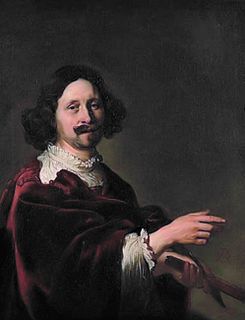
The Dutch West India Company was a chartered company of Dutch merchants as well as foreign investors. Among its founders was Willem Usselincx (1567–1647) and Jessé de Forest (1576–1624). On 3 June 1621, it was granted a charter for a trade monopoly in the Dutch West Indies by the Republic of the Seven United Netherlands and given jurisdiction over Dutch participation in the Atlantic slave trade, Brazil, the Caribbean, and North America. The area where the company could operate consisted of West Africa and the Americas, which included the Pacific Ocean and the eastern part of New Guinea. The intended purpose of the charter was to eliminate competition, particularly Spanish or Portuguese, between the various trading posts established by the merchants. The company became instrumental in the largely ephemeral Dutch colonization of the Americas in the seventeenth century. From 1624 to 1654, in the context of the Dutch-Portuguese War, the GWC held Portuguese territory in northeast Brazil, but they were ousted from Dutch Brazil following fierce resistance.

Hoorn is a city and municipality in the northwest of the Netherlands, in the province of North Holland. It is the largest town and the traditional capital of the region of West Friesland. Hoorn is located on the Markermeer, 20 kilometers (12 mi) east of Alkmaar and 35 kilometers (22 mi) north of Amsterdam. The municipality has just over 73,000 inhabitants and a land area of 20.38 km2 (7.87 sq mi), making it the third most densely populated municipality in North Holland after Haarlem and Amsterdam. Apart from the city of Hoorn, the municipality includes the villages of Blokker and Zwaag, as well as parts of the hamlets De Bangert, De Hulk and Munnickaij.

A consul is an official representative of the government of one state in the territory of another, normally acting to assist and protect the citizens of the consul's own country, and to facilitate trade and friendship between the people of the two countries.

Bartholomeus Breenbergh was a Dutch Golden Age painter of Italian and Italianate landscapes, in Rome (1619-1630) and Amsterdam (1630-1657).
The Museum card is a personal card that allows free entrance to about 400 museums in the Netherlands. As of 2019, the card costs €64.90 for adults, and is valid for one year. A discounted card is available for youth under age 19, costing €32.45.
Ahmad ibn Qāsim Al-Hajarī also known as Al-Hajari, Afoukay, Chihab, Afokai or Afoqai, was a Muslim Morisco who worked as a translator in Morocco during the reigns of the Saadi sultans, Ahmad al-Mansur, Zidan Abu Maali, Abu Marwan Abd al-Malik II and Al Walid ibn Zidan. He was later sent as an envoy by Sultan Zidan Abu Maali of Morocco who sent him to France and Netherlands to negotiate the release of some Moriscos who were captured by privateers and thrown on the shores of the mentioned countries.

Steven van der Hagen was the first admiral of the Dutch East India Company (VOC). He made three visits to the East Indies, spending six years in all there. He was appointed to the Raad van Indië. Van der Hagen protested against the harsh administration of the administrators, who wanted a monopoly on the clove trade and were willing to fight against their Spanish, Portuguese, English or Asiatic trade competitors in order to get it. Laurens Reael and Steven van der Hagen wrote with disapproval on how the Heren XVII treated the interests and laws of the Maluku population.

Dutch–Turkish relations refer to interstate relations between the Netherlands and Turkey. The diplomatic relations widely encompass and span four centuries, beginning in 1612. The first Turkish representative in the Netherlands started activities in 1859.

Morocco–Netherlands relations refers to relations between the Kingdom of Morocco and the Kingdom of the Netherlands which span a period from the 16th century to the present. Morocco is represented in the Netherlands by an embassy in The Hague, as well as four consulates-general in Amsterdam, Rotterdam, 's-Hertogenbosch, and Utrecht. The Netherlands is represented in Morocco by an embassy in Rabat and a consulate-general in Casablanca.

Bouqras is a large, oval shaped, prehistoric, Neolithic Tell, about 5 hectares (540,000 sq ft) in size, located around 35 kilometres (22 mi) from Deir ez-Zor in Syria.
The European consuls in the Ottoman Empire began as informal relationships between merchants residing in the Empire and the Sultan. The relationships were defined by the ahdname granted by the Sultan which would stipulate the religious freedom and exemption from the taxes that non-Muslim subjects had to pay. The religious implications of these relationships diminished over time as the commercial aspects took over.
Köse Halil Pasha, also known as Khalil Pasha al-Kawsaj, was an Ottoman statesman who served several high-level roles in the Ottoman Empire's administration, including serving as Defterdar and the Ottoman governor of Bosnia Eyalet (1699–1702), Erzurum Eyalet (1703–04), Van Eyalet (1704–06), Basra Eyalet, Sidon Eyalet (1708–1710), and Egypt Eyalet (1710–11). During his tenure in Erzurum, Hahil Pasha was in command of a military expedition in Georgia in 1703.

Annie Nicolette Zadoks Josephus Jitta was a Dutch numismatist and archaeologist.
Aḥmad ibn Yūsuf ibn al-Azraq al-Fāriqī was a either a Kurdish, Arab or Turkish historian from Mayyafariqin, present-day Silvan, Turkey. His major work, Ta'rikh Mayyafariqin wa-Amid, is written in Arabic.
Giovanni Renesi was an Albanian military captain and mercenary. He was involved in the organization of spy networks in the Ottoman Empire in support of the Catholic powers of southern Europe and he participated in several plans for large-scale revolts against the Ottomans.
Dirk Ameyden or Teodoro Amideno (1586–1656) was a canonist and journalist from the Low Countries who was active in 17th-century Rome.